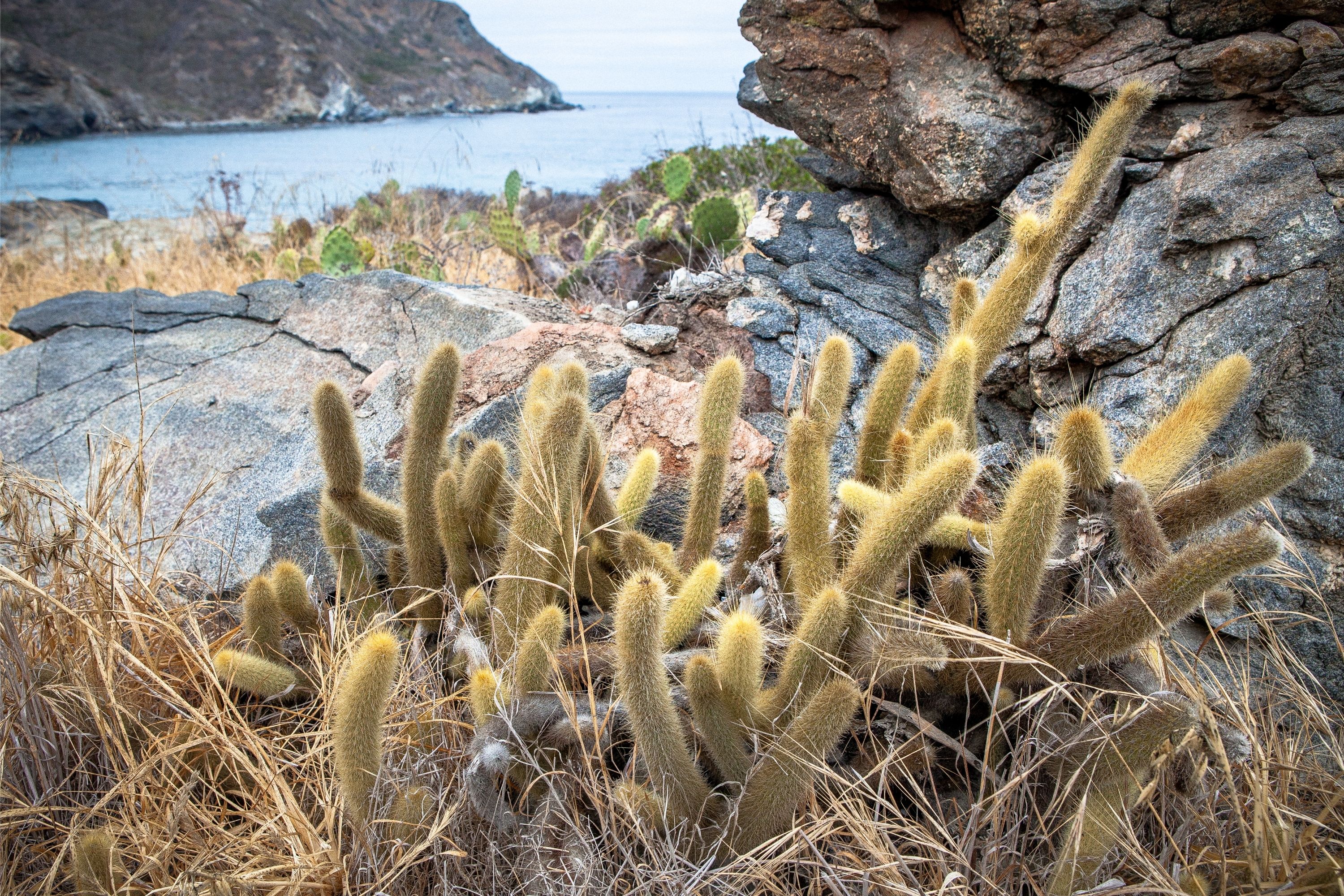Golden snakecactus
(Bergerocactus emoryi)

Description
Bergerocactus emoryi is a species of cactus, known commonly as the golden-spined cereus, golden snake cactus, velvet cactus or golden club cactus. It is a relatively small cactus, but it can form dense thickets or colonies, with the dense yellow spines giving off a velvety appearance when backlit by the sun. From April to May, yellow, green-tinged flowers emerge, which transform into reddish, globular fruit. This species is native to the California Floristic Province, and is found in northwestern Baja California and a small part of California, in San Diego County and on the southern Channel Islands. Where the Mediterranean climate of the California Floristic Province collides with the subtropical Sonoran Desert near El Rosario, hybrids with two other species of cacti are found. It is the sole member of the monotypic genus Bergerocactus, named after German botanist Alwin Berger. This species is a shrub-like cactus, forming thickets of columnar to prostrate stems. The colonies have a velvety appearance when backlit by the sun. The stems are usually less than 2 metres (6.6 ft) long, covered in numerous, interlaced, yellow and needle-like spines. The stems are 3–6 cm (1.2–2.4 in) in diameter, cylindrical, and with 12 to 18 ribs. There are 30 to 45 spines per areole, and most are less than 2 mm (0.079 in) in diameter. There are 1 to 3 central spines, which are curved downward, the longest less than 6 cm (2.4 in). The radial spines are straight. The flowers emerges either laterally or at the apex of the stem, at the distal margin of the spine cluster. The flower is 3.5–5 cm (1.4–2.0 in) long, and 2.5–4 cm (0.98–1.57 in) in diameter. The ovary is free of hair, and densely spiny. The outer perianth parts are yellow, with the tips more-or-less red, and the midveins green, with the all of the inner perianth colored yellow. After blooming, a reddish, globular fruit emerges, covered in dense spines, and extruding seeds and pulp at the tip. The seeds are 3 mm (0.12 in) large, shiny and black. The plant is near-endemic to Baja California, with the exception of populations on Santa Catalina Island, San Clemente Island, and San Diego, California. The populations remaining in San Diego are disjunct, located in Border Field State Park, Torrey Pines State Park, and Cabrillo National Monument, as the urban development in San Diego has relegated many species to these protected areas.
Taxonomic tree:







